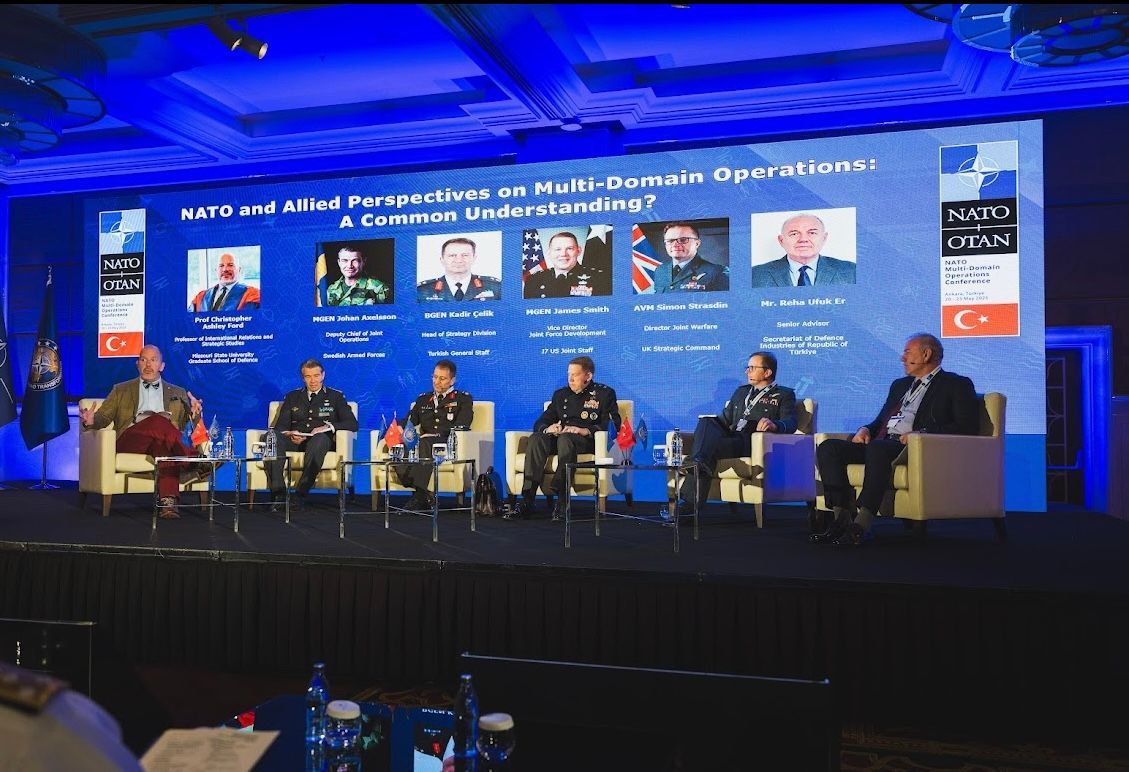“Minimum Deterrence” and Nonproliferation
Note:
The recently-published book Minimum Deterrence: Examining the Evidence (Washington, D.C.: National Institute of Public Policy, 2013) examines – and, on the whole, refutes – claims commonly heard in some policy circles that a policy of “minimum deterrence” could permit dramatic reductions in the U.S. nuclear arsenal without damaging U.S. national security. As the introduction to the volume puts it, “ Minimum Deterrence proposals claim that a relatively small number of nuclear weapons, measured in single digits to hundreds, is an adequate nuclear force for all pertinent U.S. deterrence missions, including extending U.S. nuclear deterrence coverage to U.S. allies.” The various chapters of the book explore various claims associated with this “Minimum Deterrence” perspective, assessing the actual strength of the logic – and, above all, the empirical evidence – behind each claim.
A great many experts contributed to producing the book, and al l of it is likely of interest to NPF readers. We reproduce below the portion critically assessing the claim that “ Nuclear force reductions provide essential support for non-proliferation and arms control efforts. ” This chapter was jointly authored by Dr. Ford, Dr. Susan Koch, and Dr. Keith B. Payne . This excerpt is reproduced here with the kind permission of the National Institute for Public Policy , which holds the copyright for this material. [Note that footnotes have been deleted from the text below. Dr. Ford would be happy to provide the original citations upon request, however. Better yet, get the book!]
Text of chapter follows:
Minimum deterrence proponents assert that lowering reliance on nuclear weapons and adopting very low force levels would encourage – or even be essential to – nuclear non-proliferation and further negotiated nuclear arms reductions. These claims assume the existence of a strong, and specific, cause-and-effect relationship between the United States’ nuclear force posture and other countries’ strategic choices on nuclear weaponry. In this purported relationship, other countries’ interest in acquiring or keeping nuclear weapons is directly proportional to the size of the American arsenal. In other words, it is assumed that others will lose interest in possessing nuclear weapons, and become more willing to cooperate with us against proliferation, if and as we reduce or abandon our arsenal. Proponents of this view argue that the reverse also holds true –that a failure to reduce dramatically current nuclear stockpiles would encourage proliferation and discourage further reductions.
This claimed linkage can and must be subjected to careful analysis. Is it true, for instance, that the U.S. nuclear weapons posture is a critical determinant of other countries’ approaches to nuclear weaponry, and that, if so, U.S. cuts would be reciprocated? Is it true that proliferator behavior and other countries’ attitudes toward non-proliferation are influenced by the U.S. posture to such an extent, and in such a way, that a Minimum Deterrence approach would catalyze significantly improved behavior? One must examine the empirical record in order to evaluate the arms control and non-proliferation claims made on behalf of Minimum Deterrence.
Stubborn Facts
As noted, proponents of Minimum Deterrence often claim that, by adopting this approach to nuclear strategy and force structure, the United States will lead the way to progressively deeper negotiated reductions ending in eventual global nuclear disarmament, and persuade actual and potential proliferators to change their ways. In reality, there is no sign of any such beneficial impact or relationship to date, and little if any basis for expecting that U.S. nuclear reductions will have these effects in the future. Indeed, if anything, just the opposite is true. U.S. adoption of a minimum deterrence force structure and strategy could both impede negotiated arms reductions and fuel proliferation.
Preventing Proliferation
Legal Arguments. Many Minimum Deterrence advocates maintain that U.S. nuclear reductions to a few hundred warheads or even lower, will help to dissuade potential proliferators from acquiring nuclear weapons, and to persuade actual proliferators to abandon their programs.
Most argue further that the NPT firmly links the non-proliferation pledge of the non-nuclear weapons states to a denuclearization obligation for the five nuclear weapons states. The widespread belief in that “NPT bargain,” which has spread beyond Minimum Deterrence advocates, is actually very recent. Article VI of the NPT provides: “Each of the Parties to the Treaty undertakes to pursue negotiations in good faith on effective measures relating to cessation of the nuclear arms race at an early date and to nuclear disarmament, and on a treaty on general and complete disarmament under strict and effective international control.” In January 1969, a senior National Security Council staff member explained to new National Security Advisor Henry Kissinger that Article VI was “an essentially hortatory statement and presents no problems.” While the Preamble to the Treaty is not legally binding, it does provide a guide to the original intent of the Parties; the Preamble clearly conditions nuclear disarmament on general and complete disarmament, describing the first as pursuant to the second. Indeed, one could well argue that Article VI places less importance on nuclear disarmament than on general and complete disarmament, calling for a treaty on the latter, but only “effective measures” on the former. There is no question that, at least, they are equal obligations under Article VI.
The 1995 NPT Review Conference that decided on the indefinite extension of the Treaty paid more attention to Article VI than the Parties did initially. However, its primary focus was still on the need for compliance and universality, and it also retained the link between the two elements of Article VI. Thus, the text of the 1995 Review Conference decision on indefinite extension affirmed:
“…that there is a need for full compliance with the Treaty, its extension and its universal adherence, which are essential to international peace and security and the attainment of the ultimate goals of the complete elimination of nuclear weapons and a treaty on general and complete disarmament under strict and effective international control.”
In subsequent years, many NPT Parties, including many American officials and observers, completely flipped positions on the relationship between non-proliferation and nuclear arms reductions. In doing so, they came to argue that non-proliferation depends on nuclear reductions, rather than the reverse. President Obama’s famous Prague speech in April 2009 was the first official U.S. Government statement to endorse this interpretation of Treaty requirements: “The basic bargain [of the NPT] is sound: Countries with nuclear weapons will move toward disarmament, countries without nuclear weapons will not acquire them, and all countries can access peaceful nuclear energy.”
The 2010 NPT Review Conference went even further. Its Final Document omits any reference to linkages between compliance and nuclear abolition or between nuclear and general and complete disarmament. Instead, it cites a supposed “ unequivocal undertaking by the nuclear weapon States to accomplish the total elimination of their nuclear arsenals” (emphasis added), and calls for further reductions.
President Obama’s endorsement of the supposed nuclear disarmament/non-proliferation bargain in the NPT undoubtedly had a major impact on the wording of the Final Document. The 2010 Review Conference was also impervious to the U.S. submission of data on the size of the U.S. stockpile between 1964 and 2009—data which showed that the number of U.S. nuclear weapons had fallen by 84 percent since their 1967 peak (from 22,217 to 5,113), and by 50 percent during the supposedly-anti arms reduction George W. Bush administration (from 10,526 in 2001 to 5,273 in 2008).
Political Realities. Debates about the legal standing of a supposed disarmament/nonproliferation bargain in the NPT are less important than the political environment: the amount and importance of the pressure placed, respectively, on nuclear weapons states to reduce their arsenals and on non-nuclear weapons states to remain in compliance. It has escaped general notice that, by claiming that the nuclear-weapon states have an unconditional obligation to disarm, the 2010 NPT Review Conference dropped the idea of a Treaty bargain, and in essence argued that there is no relationship between nuclear reductions and non-proliferation. In that one regard, at least, they were right.
It is sometimes claimed that fear of U.S. nuclear weapons lies behind the ambition of countries like Iran or North Korea to acquire nuclear weaponry—and that American nuclear reductions will therefore help to reduce proliferation pressures. In reality, however, there is no evidence that U.S. nuclear reductions help to encourage non-proliferation. If anything, just the opposite is true.
First, U.S. validation of the basic premise of Minimum Deterrence – namely, the notion that even the greatest of powers can be deterred by a very small nuclear force – might actually encourage proliferation, for this is just what such regimes seek to do to the United States, even while lacking the means to acquire a large arsenal. Since the fall of the Berlin Wall in 1989, for instance, the United States has reduced the size of its nuclear arsenal by some 75 percent. This same period, however, has coincided with the acceleration of the North Korean and Iranian nuclear programs, as well as the emergence of both India and Pakistan as weapons possessors. North Korea, moreover, began developing its arsenal in the early 1990s, just after U.S. tactical nuclear weapons had been removed from South Korea.
Further, to the extent that fear of American military power features in the proliferation incentives perceived by the ruling regimes in countries such as North Korea and Iran, U.S. conventional power likely has much more impact than nuclear capabilities. If this is so, Washington’s adoption of a Minimum Deterrence posture might actually make proliferation more attractive, if American policies of “reducing reliance upon nuclear weaponry” continue to stress the military value of our advanced conventional weaponry. States like Iran and North Korea know that they could never defeat the United States in a conventional conflict, but may logically believe that they can deter U.S. action against them through possession of even a small nuclear arsenal. Such a belief might only be strengthened if U.S. nuclear forces fell to Minimum Deterrence levels.
Second, many U.S. friends and allies were dissuaded from acquiring nuclear weapons because of the security assurance provided by U.S. extended nuclear deterrence. Some, like Germany, now would be unlikely to “go nuclear” even if that confidence was lost. Others, most notably Japan and South Korea, might react very differently to reduced confidence in the United States umbrella, as France did decades ago.
Faced with escalating North Korean nuclear threats and the prospect of continuing U.S. nuclear reductions, for example, some South Korean politicians have publicly expressed the need to develop indigenous nuclear weaponry in order to “maintain a balance of terror that confronts nuclear with nuclear.” (A poll taken in August 2011 revealed that some 62 percent of South Koreans now support nuclear weapons development.) It was also reported in the Japanese press as early as 2007 that some Japanese defense officials had similar misgivings about U.S. nuclear cuts, which have recently been said to be pushing “some in Japan” into “discussing indigenous nuclear development … partly due to a lack of confidence in the U.S. extended deterrence.”
Concern that U.S. nuclear reductions could help create a possible “tipping point” for further nuclear proliferation has been expressed by former U.S. Secretary of Defense James Schlesinger, as well as the U.S. State Department’s International Security Advisory Board, which warned that “a lessening of the U.S. nuclear umbrella could very well trigger a cascade [of proliferation] in East Asia and the Middle East.” Ironically, the sort of deep reductions proposed by Minimum Deterrence enthusiasts might indeed actually contribute to nuclear proliferation.
The nuclear arsenals (or reductions thereof) of the five recognized nuclear powers (P-5) seem to have had little impact on the decisions of states to abandon nuclear weapons ambitions. South Africa acquired, and then destroyed, its nuclear weapons for domestic and regional reasons. Military dictatorships in Brazil and Argentina nurtured secret nuclear weapons programs, but they were abandoned as the two countries moved to more democratic rule. Libya did not abandon its nuclear program because of nuclear-weapon state reductions, but out of fear that it could be the next Iraq. Iraq pursued, and Iran continues to pursue, nuclear weapons for regional dominance.
The nuclear decisions of India and Pakistan were influenced to some extent by their respective, and very different, relations with China; however, the major motivating factors were their bilateral, and trilateral, regional tensions. Ultimately, Ukraine, Belarus and Kazakhstan willingly abandoned their nuclear capabilities. Two key factors were Russia’s agreement to destroy the nuclear warheads removed from their territories as a condition of their denuclearization decisions and the understanding that non-nuclear status was essential to a good relationship with the United States and NATO.
Non-proliferation Cooperation. Finally, it often is claimed that U.S. nuclear reduction to Minimum Deterrence levels would help galvanize support for non-proliferation among other members of the international community—particularly countries in the developing world—which allegedly can be won over to the cause of non-proliferation if Washington works harder to eliminate its own weapons. There is, however, little or no evidence to support the assertion. So far, the United States seems to have won no significant non-proliferation cooperation as a result of its recent pro-disarmament stance.
To be sure, both Iran and North Korea now face more international sanctions than ever before. Each instance in which sanctions pressures have been tightened has closely followed – and, in public, explicitly been tied to – specific new provocations by the regimes in question. Iran faced additional pressures as it repeatedly defied U.N. Security Council mandates, rejected international diplomatic initiatives, had additional secret nuclear facilities come to light, and began enriching uranium to nearly 20 percent. North Korea faced additional pressures as it withdrew from the NPT, engaged in multiple nuclear tests, launched conventional military attacks upon South Korean forces, and conducted ballistic missile tests in violation of Security Council resolutions. It seems clear that it is the egregiousness of these regimes’ own behavior that has led directly to tougher sanctions; there is no evidence that recent additional pressures owe anything to U.S. nuclear reductions.
While recent American disarmament positions have been applauded in NPT fora, these positions also appear to have been “pocketed” by diplomatic interlocutors who were spurred thereby to demand additional American reductions. Moreover, there has been no particular improvement in other countries’ positions on non-proliferation. If anything, the developing world’s position has worsened in this regard. For example, in August 2012, the Non-Aligned Movement unanimously endorsed the position taken by Iran in its nuclear dispute with the Security Council. Among major powers, Russia and China have, over the past several years, refused or watered down United Nations Security Council sanctions on Iran, North Korea and Syria—acceding only when those states’ behavior worsened considerably.
Moreover, the Final Document of the 2010 NPT Review Conference devoted much more attention to the supposed nuclear disarmament commitment of Article VI than it did to nonproliferation obligations – an imbalance that is difficult to square with the basic purpose, and indeed name, of the Treaty. The section of the 2010 Final Document concerning review of Treaty operation devotes just one page to Articles I and II, and two and one-half pages to Article VI. Its conclusions and recommendations include nearly six pages on nuclear disarmament; only two and one-half pages address nuclear proliferation. There is no mention anywhere in the Final Document of states of proliferation concern such as Iran and North Korea. The 2010 Final Document stands in stark contrast to its 1995 counterpart, which placed primary (and appropriate) emphasis on the requirement for NPT compliance and universal adherence.
Arms Control
There is an inherent inconsistency between the argument of Minimum Deterrence advocates that Russia and China are no longer enemies of the United States or our allies, and their simultaneous support for progressively deeper negotiated nuclear reductions. If we are not in a deterrent relationship with Russia or China and will not be, why seek arms control agreements with them, any more than we do with the United Kingdom and France? The active nuclear modernization programs of both states, their professed perceptions of the United States as an enemy (including concerns about the impact of U.S. missile defenses on their deterrents), and the continuing threats they pose to close U.S. allies in Central Europe and East Asia, respectively, strongly indicate otherwise.
The question remains whether U.S. adoption or advocacy of Minimum Deterrence would lead to, or even facilitate the likelihood of, negotiated deep nuclear reductions with Russia and China. There is no basis in past experience for such a belief, nor any reason to believe that it would emerge in the foreseeable future. The rest of the world frequently fails to follow the U.S. lead on such issues. Instead, countries appear to base decisions on their own perceived security needs and values; the American “good example” counts for very little.
One of the most important examples is the fate of the unilateral/reciprocal Presidential Nuclear Initiatives (PNI) of 1991-1992. The United States announced unprecedented, unconditional reductions, coupled with a challenge for the Soviet Union (and then Russia) to reciprocate. Presidents Mikhail Gorbachev in 1991 and Boris Yeltsin in 1992 accepted that challenge. However, there is considerable evidence from open Russian publications that the Soviet Union and Russia never actually implemented the promised reductions. Between 1991 and 1994, the United States nuclear warhead stockpile dropped by 50 percent—the greatest absolute and percentage reductions in U.S. history. Moreover, the United States never developed new weapons to replace those reduced or eliminated. Indeed, as a result of the 2010 Nuclear Posture Review, the United States decided to go beyond the PNIs by eliminating the remaining naval nuclear cruise missiles (TLAM-N) that had been in storage since 1991. It does not appear that Russia fully followed suit, in either the initial reductions or later replacement of eliminated or outmoded weapons.
In another example, the United States, United Kingdom and France have observed moratoria on nuclear explosive testing since 1992. Russia and China have claimed to do so as well. This restraint, however, has not kept India, Pakistan, and North Korea from conducting nuclear tests. Nor, apparently, has it kept Russia and possibly China from apparently conducting low-yield nuclear explosive tests. Moreover, the United States has declined to develop or produce any new nuclear warhead type for the last two decades. Russian officials, however, admit developing new warheads for multiple missile systems, including advanced low-collateral damage and precision low-yield devices. For its part, China reportedly made significant advances in warhead miniaturization in the 1990s, and has been testing missiles such as its DF- 21 and DF-31—as well as the new submarine-launched JL-2—with multiple small new warheads.
There is as yet no evidence that U.S. efforts to “lead the way” toward deep nuclear weapons reductions will prove any different from these historical examples. All nuclear weapon states have moved openly to modernize their nuclear forces. However, while the United States has announced strategic delivery vehicle modernization programs, it has repeatedly delayed them. The same is true of the United Kingdom. Just the opposite is the case for Russia and China, whose modernization programs proceed at rates and levels not seen since the Soviet period.
No NPT nuclear weapons state has shown any significant, practical interest in further reductions to notably lower numbers since the advent of the Obama administration’s nuclear approach of “leading the way” by setting a good example. China, France and the United Kingdom have made clear that they will not participate in multilateral reduction negotiations as long as U.S. and Russian arsenals remain so much larger than their own. For its part, Russia has placed one unacceptable condition after another on even beginning negotiations for a follow-on to the New START Treaty. Russia has also made abundantly clear that it has no interest in losing its huge advantage in non-strategic nuclear forces – an advantage that may result in significant part from the uneven fulfillment of the Presidential Nuclear Initiative (PNI).
There is also reason to suspect that the overall American disarmament agenda makes Russian and Chinese reductions harder. U.S. steps to reduce reliance upon nuclear weapons are predicated upon Washington’s unparalleled current conventional military power, its development of unique long-range precision, advanced conventional strike and global intelligence-gathering and targeting capabilities, as well as upon its possession of improving ballistic missile defense (BMD) capabilities. Increasing U.S. exploitation of such non-nuclear forces, however, appears to make Moscow and Beijing (and probably other states) less interested in nuclear reductions. Russian officials in particular have stressed publicly that future negotiated nuclear reductions will not be possible without new constraints on U.S. conventional forces and ballistic missile defenses.
Nor have weapons possessors outside the NPT shown the slightest interest in reductions in response to U.S. disarmament moves to date. Pakistan and India are presently building new weapons at a quick pace, the former increasing its “tactical” arsenal while the latter moves toward a full nuclear triad with the development of submarine-launched missile capabilities and reportedly also MIRV technology. Meanwhile, North Korea is working to develop its own arsenal, testing intercontinental-range ballistic missile technology and nuclear devices, and vowing to restart plutonium production while it continues uranium enrichment. Pyongyang has abandoned even its former semblance of commitment to eventual denuclearization, and brandishes increasingly bellicose nuclear threats rather than demonstrating any interest in nuclear cuts.
Summary
Further deep reductions as recommended by Minimum Deterrence would likely eliminate whatever leverage the U.S. might now retain to motivate Russian or Chinese nuclear reductions. And, contrary to the beliefs of Minimum Deterrence advocates, experience to date suggests that U.S. nuclear reductions are unlikely to inspire disarmament or non-proliferation rectitude in others. After two decades of dramatic post-Cold War U.S. nuclear reductions and four years of pro-disarmament U.S. nuclear policy, the case for the future diplomatic, arms control, and nonproliferation benefits of Minimum Deterrence remains exceedingly weak. So far, “minimalist” approaches have proven essentially fruitless in these regards. Of course, it is possible, in principle, that the future could unfold much differently than has the past, but to date there is little reason to expect the dramatic change presumed by Minimum Deterrence. To plan as if such change will occur is to place hope over evidence.
-- Christopher Ford, Susan Koch, & Keith Payne








